- europages
- >
- COMPANIES - SUPPLIERS - SERVICE PROVIDERS
- >
- chemicals
Results for
Chemicals - Import export
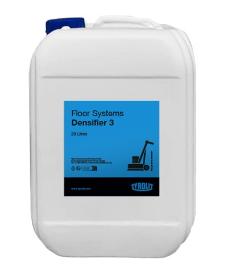
TYROLIT - SCHLEIFMITTELWERKE SWAROVSKI AG & CO K.G
Austria
Tyrolit divides the floor grinding process into three parts: rough grinding, pre-polishing, and polishing. In the first two steps, material is removed, and in the third phase, the floor gets its final finish. After each stage, chemical agents are used to densify, seal, or finish the floor. Customers receive these chemicals directly from Tyrolit. In rough grinding, material is removed based on the desired final appearance. Tyrolit offers metal bond grinding shoes with different grains. Cracks and pores are repaired with a special chemical filler. In pre-polishing, the floor is ground with ceramic/resin bonded tools to level it. A densifier compacts and hardens the surface, reducing water absorption. In the final polishing phase, the floor is sealed with a "sealer" to protect against liquids, grease, and dirt. Tyrolit's floor grinding chemicals transform drab substrates into robust, resilient floors with a long-lasting and appealing appearance.
Request for a quote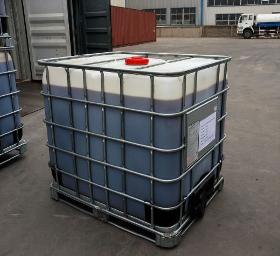
OEN CHEMICALS GMBH
Austria
Chemical appearance Alky Hydroxamic Acid has a pretty dark red colour appearance. It also comes in a thick liquid form which has no strong kind of odour. It has the tendency to solidify when exposed to temperatures which are lower than 15 ºC. Chemical application and strength Alkyl Hydroxamic Acid or Alkyl Hydroximic Acidis a very good collector and flotation agent with oxidized sulfide and different metallic oxides, even ones which are very difficult to extract by other collector agents. It has a strong collection power with wolframite, copper oxide ores, titanic iron, hematite, niobium ores, and many more. It can strongly extract various non-ferrous metals. In alkaline conditions, Alkyl Hydroxamic Acid is a strong floater of fine cassiterite It should be placed in an environment away from exposure to water and extreme heat from fire and sunlight. If placed in a very cold confinement, it has the tendency to solidify.
Request for a quote
OEN CHEMICALS GMBH
Austria
Chemical appearance: Sodium cyanide is found either in the white crystalline form or in the form of granular powder. It is also water-soluble and forms a clear and colorless aqueous solution. Chemical application and strengths: The most important application of sodium cyanide is evident in the extraction of gold. The use of sodium cyanide is still the best method for mining gold. Sodium cyanide is a common agent in the leaching process for the majority of gold extraction operations. The primary reason for the use of Sodium cyanide in the extraction of gold is the higher affinity of gold towards cyanide. Sodium cyanide separates gold through oxidizing it and dissolving gold in the presence of oxygen and water. The most important strengths of sodium cyanide in the mining of precious metals are reflected in its cost-effectiveness, higher availability, and better processing
Request for a quote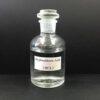
OEN CHEMICALS GMBH
Austria
Chemical Appearance Hydrochloric Acid 33% (HCl 33%) is a colourless transparent liquid. It is an aqueous solution of hydrogen chloride. It is a strong and highly corrosive acid which has a distinctive pungent odor. It is water and alcohol soluble but insoluble in hydrocarbons. It is an extremely important industrial chemical. Chemical Applications and Strengths Hydrochloric Acid 33% (HCl 33%) is an extremely efficient chemical compound and therefore, has many industrial applications. Its main applications and strengths are: It is used in the stimulation of petroleum wells. Stimulation process involves the removal of rust, scales, and undesirable carbonate deposits in oil wells. This enhances the flow of crude oil or gas to the wells. It is used in the manufacture of dyes, phenols, and plastics It is used to produce chemical intermediates like FeCl3, ZnCl2, AlCl3 and many more. It is used as a cleaning agent for household, commercial, and industrial purposes.
Request for a quote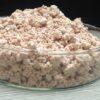
OEN CHEMICALS GMBH
Austria
Chemical appearance Salicyl Hydroxamic Acid has a pinkish orange colour and comes in powder form. It is chemically stable and has a subtle distinct odour. Chemical application and strength Salicyl Hydroxamic Acid or Salicyl Hydroximic Acid when used with iron, tin tungsten, copper, and various rare earth materials will be able to create stable chelate. In contrast, if it is used along with alkali earth metals and various alkali metals it will create unstable chelate. In conclusion, Salicyl Hydroximic Acid (SHA) has a very strong selectivity. If used with tin, it will be able to produce different complex salts, which proves its excellent selectivity towards tin. It is easily soluble within water and also in aqueous alkali solutions. In the flotation process, P86 is always partnered with SHA when extracting tin. Salicyl Hydroximic Acid (SHA) also has excellent frothing ability. Because of its characteristic of low toxicity, it is safe to use within any environment.
Request for a quote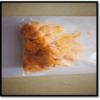
OEN CHEMICALS GMBH
Austria
Octyl Hydroxamic Acid is an organic compound. Hydroxamic acids are a class of organic compounds. They have the functional group RC(O)N(OH)R’ where R and R’ are organic residues and CO is the carbonyl group. They are amides. They are used extensively for the flotation of rare earth minerals during concentration and extraction of ores. Octyl Hydroxamic Acid is a very useful chemical compound which is made by the reaction of esters or acid chlorides with hydroxylamine salts. Its chemical formula is C9H19NO2. Chemical Appearance Octyl Hydroxamic Acid has the appearance of a dark yellow coloured solid. It has no distinct odour. It is readily soluble in water and also in alkaline solutions. It has a pH level between 10 to 13. Chemical Applications and Strengths Octyl Hydroxamic Acid or N-Hydroxynonanamide is an extremely useful chemical compound and therefore, has many industrial applications. Its main applications and strengths
Request for a quote
OEN CHEMICALS GMBH
Austria
Chemical appearance Methyl Isobutyl Carbinol or 4 – Methyl – 2 – Pentanol has a very clear appearance which is similar to that of alcohol and comes in a liquid form which produces a slight distinct odour which is also similar to alcohol. Chemical application and strength Methyl Isobutyl Carbinol or 4 – Methyl – 2 – Pentanol is a kind of chemical compound which is organic and is derived from acetone. In the mining industry, MIBC is popularly used as a frothing agent during the flotation processes of different minerals and also when producing additives of lubricant oils. Compared to other frothing agents, MIBC has a great selectivity and fast kinetics in the flotation process. It produces froths with are dry yet easy to break which increases the efficiency and yield of the mineral. Has little to none collector resistance and used widely in the processing of gold ores. Acts as a solvent in the extraction process of essential oils which are used in fragrances.
Request for a quote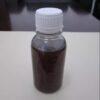
OEN CHEMICALS GMBH
Austria
Chemical appearance Alky Hydroxamic Acid has a pretty dark red colour appearance. It also comes in liquid form which has no distinct odour. It has a pH level of 10 to 13. Chemical application and strength Sodium Alkyl Hydroxamic Acid or Sodium Alkyl Hydroximic Acid is a very good collector and flotation agent with oxidized sulfide and different metallic oxides, even ones which are very difficult to extract by other collector agents. It has a strong collection power with wolframite, copper oxide ores, titanic iron, hematite, niobium ores, and many more. It can strongly extract various non-ferrous metals. In alkaline conditions, Alkyl Hydroxamic Acid is a strong floater of cobalt and copper. It should be placed in an environment away from exposure to water and extreme heat from fire and sunlight. If placed in a very cold confinement, it has the tendency to solidify. It is easily soluble in water and also in alkaline solutions.
Request for a quote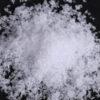
OEN CHEMICALS GMBH
Austria
Chemical appearance Zinc Sulfate Heptahydrate has a vibrant white colour and comes in crystal powder form. It is subtly soluble in acid and water. It doesn’t produce any strong pungent odour. It is very toxic to aquatic wildlife and should not be disposed incorrectly. Chemical application and strength Zinc Sulfate Heptahydrate is product which is being used in a wide range of daily applications and manufacturing purposes. In the Agricultural industry it is popularly used in fertilizers and pesticides. It can also be found being used in different binding agents and general adhesives. Used in the production of different cleaning and washing products which include laundry detergents, grease strippers, soaps, stain removers, and many more. Also used in the production of personal hygiene like perfumes, toothpastes, shampoos, lotions and others Used in the growing of crops and raising livestock. Used as oxidation agents, accelerators, reducing agents, and many more.
Request for a quote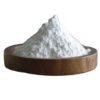
OEN CHEMICALS GMBH
Austria
Zinc Chloride 98% is a very useful chemical compound having the chemical formula ZnCl2. Chemical Appearance Zinc Chloride 98% has the appearance of a white or colorless crystalline solid. It is hygroscopic and very deliquescent. It is odourless. It is highly soluble in water. Chemical Applications and Strengths Zinc Chloride 98% is an extremely efficient chemical compound and therefore, has many industrial applications. Its main applications and strengths are: Zinc Chloride 98% is most popularly used in the battery industry. It is used as a metallurgical flux. It reacts with metal oxides and gives derivatives of the idealised formula MZnOCl2. This reaction uses zinc chloride solution as a flux for soldering. It is used in organic synthesis. It is a very useful Lewis acid in organic chemistry. It is used as a catalyser for catalysing the conversion of methanol to hexamethylbenzene.
Request for a quote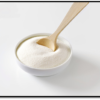
OEN CHEMICALS GMBH
Austria
Zinc Acetate is an organic compound which is categorised as an acetate salt in which zinc is the cationic element. It exists in both anhydrous and dihydrate forms. It is a very useful chemical material that is industrially produced by acetic acid’s action on zinc carbonate or zinc metal and it’s chemical formula is C4H6O4Zn. Chemical Appearance Zinc Acetate has the appearance of a white crystalline solid. It is soluble in water and dilute mineral acids. However, it is insoluble in alkalis. It is a mildly toxic chemical. Chemical Applications and Strengths Zinc Acetate or Zinc Ethanoate is an extremely useful chemical compound and therefore, has many industrial uses. Its main applications and strengths are: Zinc Acetate is most commonly used in the production of dietary supplements. It is widely used as a food additive having the E number E650.
Request for a quote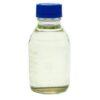
OEN CHEMICALS GMBH
Austria
Triethanolamine 85% (TEA 85%) is a viscous organic compound. It is both a tertiary amine and a triol. It is produced from reacting ethylene oxide with aqueous ammonia. Chemical Appearance Triethanolamine 85% (TEA 85%) is a colorless to yellow liquid. It is completely soluble in water, also soluble in ethanol, acetone, glycerine, and ethylene glycol. It has an ammonia like smell. Chemical Applications and Strengths Triethanolamine 85% (TEA 85%) is an extremely efficient chemical compound and therefore, has many industrial applications. Its main applications and strengths are: Primarily, Triethanolamine is used in making surfactants. It is used as a corrosion inhibitor.
Request for a quote
OEN CHEMICALS GMBH
Austria
Chemical appearance: Linear AlkylbenzeneSulphonic Acid is a sticky, highly viscous brown liquid. This highly dense liquid does not have a pungent smell. In temperatures lower than 10 degree Celsius, the chemical solidifies. Chemical application and strengths: LABSA is an anionic surfactant. Its molecules have both hydrophobic and hydrophilic group. This compound is created from a sulfonation process where chlorosulfonic acid, sulphuric acid, diluted sulphur trioxide and sulfamic acid. The long length of the alkyl chain makes it able to form different formulations when mixed with other salts. Sulphonic acid is a low-volume synthetic surfactant that is available at a low cost. It is used for the production of various emulsifiers and detergents for use in households, dishwashing and as well as mercerizing and cleaning agents in the textile industry. The increased use of LABSA increases the surface area of distempers. This is why it is used as a wetting agent and an emulsifier.
Request for a quote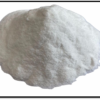
OEN CHEMICALS GMBH
Austria
Sodium Persulfate is an inorganic compound. It is a very useful chemical compound which is made by the electrolytic oxidation of sodium hydrogen sulfate. Its chemical formula is Na2S2O8. Chemical Appearance Sodium Persulfate has the appearance of a white crystalline solid. It is almost non hygroscopic. Chemical Applications and Strengths Sodium Persulfate is an extremely useful chemical compound and therefore, has many industrial applications. Its main applications and strengths are: Sodium Persulfate is most commonly used as a radical initiator for emulsion polymerisation reactions for styrene based polymers such as acrylonitrile butadiene styrene. It is used for fast paced curing of low formaldehyde adhesives. Sodium Persulfate itself is a bleach specifically in hair cosmetics and as a detergent component. It is used as a replacement of ammonium persulfate in etching mixtures for zinc and printed circuit boards.
Request for a quote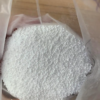
OEN CHEMICALS GMBH
Austria
Sodium metasilicate pentahydrate, white granules. Soluble in water and dilute lye; insoluble in alcohol and acid. The aqueous solution is alkaline. Easy to absorb moisture and deliquescence in exposed air. With detergent, emulsification, dispersion, wetting, permeability and pH buffering capacity. Sodium metasilicate pentahydrate is a crystalline compound with the chemical formula Na2SiO3·5H2O. It is composed of sodium (Na), silicon (Si), oxygen (O), and water (H2O) molecules. The pentahydrate form indicates that it contains five molecules of water per molecule of sodium metasilicate. Sodium metasilicate pentahydrate is a white, granular or powder-like substance with a high solubility in water. It has a basic pH and is alkaline in nature. It is commonly used in various industrial applications due to its unique properties. One of the significant uses of sodium metasilicate pentahydrate is in cleaning products and detergents. It serves as a builder, helping to remove stains
Request for a quote
OEN CHEMICALS GMBH
Austria
Sodium Metasilicate Anhydrous is an inorganic substance, a stable chemical made of silicon, sodium and oxygen. This chemical is made with the melting of silica sand or quartz with sodium carbonate at high temperature to create glassy substances which are grind further into fine powder. Sodium Metasilicate Anhydrous must be kept in dry, cool and well ventilated places as it can react with acids and oxidizing substances etc., to produce heat and fumes. Sodium Metasilicate Anhydrous is mostly used as a builder, surfactant and corrosion inhibitor in various industrial applications. Sodium Metasilicate Anhydrous is used in a wide range of industrial chemicals such as detergent and in the cleaning industry as a cleaning agent and builder in laundry and dishwashing detergents. This chemical is also used in the construction industry to improve the strength and durability of cement and concrete compositions
Request for a quoteDo you sell or make similar products?
Sign up to europages and have your products listed
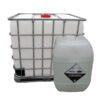
OEN CHEMICALS GMBH
Austria
Chemical appearance: The 85% phosphoric acid is an aqueous solution that is colourless, odourless and not volatile. It presents in the form of a syrup, thick but still pourable. The basic conjugate base of this acid is a dihydrogen phosphate anion which is a mix of hydrogen and phosphate ions. Chemical application and strengths: There are two types of phosphoric acids, food grade and industrial grade phosphoric acids. The food grade phosphoric acid is added to foods and drinks to give them a slight acidic feel. It is common in colas and jams where it gives them a sour or tangy taste. The food grade type is also used as nutrition agent for food containing yeast. This helps in the growth of yield in the production process without the formation of other bacteria that are not essential in the maturing of foods or drinks. In sugar production, the acid acts as reaction catalyst. The industrial-grade phosphoric acid is used as a drying agent, a catalyst and cleaners.
Request for a quote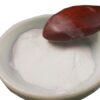
OEN CHEMICALS GMBH
Austria
Chemical appearance: Oxalic acid presents as white transparent crystals that combine two water crystals. It appears in two types, the anhydrous and dihydrate form. The dihydrate has water molecules while the anhydrous one does not have any water crystals. Both types are soluble in water and are odorless Chemical application and strengths: The acid is made from the oxidation of glucose in the presence of nitric acid. It is also prepared by carboxylation of alcohol. The resulting acid has a strong reducing property while its conjugate base makes for a great chelating agent. This strength allows it to be used in the polishing of marble, bleaching and in removal of rust. It is also effective in the removal of dirt in leather, wood and aluminum products during the manufacturing process.
Request for a quote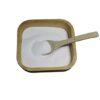
OEN CHEMICALS GMBH
Austria
Chemical Appearance Manganese Sulfate Monohydrate >30% has the appearance of a white deliquescent crystalline solid. It is odourless. It is soluble in water and very slightly soluble in methanol. It is insoluble in ether and ethanol. Chemical Applications and Strengths Manganese Sulfate Monohydrate >30% is an extremely efficient chemical compound and therefore, has many industrial applications. Its main applications and strengths are: Manganese Sulfate Monohydrate >30% is used in raising and farming of animals. It is used in animal feed. It is mostly used for making dryer of ink and paint. It is used as a catalyser of synthetic fatty acid. It is also used for the production of manganese compound. It is used for electrolysing metallic manganese.
Request for a quote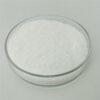
OEN CHEMICALS GMBH
Austria
Chemical appearance Lead nitrate or Lead dinitrate has a white colour and comes in the form of small crystals bits. It is very soluble in water. Chemical application and strength Lead nitrate or Lead dinitrate is an inorganic compound which has a wide array of applications in different industries. In the field of mining, it is used as an accelerator in the cyanidation process of gold and other precious metals. In the flotation processes it is a great activator of stibnite in antimony ores. It has the ability to enhance the kinetics of gold leaching. One of the advantages of Lead nitrate is that it can activate sphalerite which is like Copper Sulphate. Adding lead nitrate will not the consumption of cyanide. When used along with oxygen, it is able to provide better effectiveness in the extraction of gold. It is also used as a heat stabilizer in polyesters and nylon. Also, it is used in the coatings of photothermograpic paper.
Request for a quote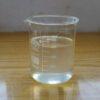
OEN CHEMICALS GMBH
Austria
Diethanol Isopropanolamine 85% (DEIPA 85%) is an amino alcohol. It belongs to the group of alkanolamines. It is a tertiary alkanolamine. It is produced from reacting propylene oxide with diethanol amine. Chemical Appearance Diethanol Isopropanolamine 85% (DEIPA 85%) is a colorless to pale yellow transparent and viscous liquid. It is completely soluble in water, also soluble in ethanol, acetone, glycerine, and ethylene glycol. It has a very light ammonia like smell. Chemical Applications and Strengths Diethanol Isopropanolamine 85% (DEIPA 85%) is an extremely efficient chemical compound and therefore, has many industrial applications. Its main applications and strengths are: Primarily, Diethanol Isopropanolamine 85% (DEIPA 85%) is used in cement grinding aids. It is extensively used by the cement industry.
Request for a quote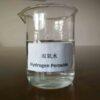
OEN CHEMICALS GMBH
Austria
Chemical Appearance Hydrogen Peroxide or Dihydrogen Dioxide has a transparent and colorless appearance. It comes in the liquid form with a sharp odor. Chemical Applications Hydrogen Peroxide has many industrial applications. Its main applications are: It is used as a bleaching agent in textile and paper industries. It is used in the production of various organic compounds in the chemical industries. It is used in the oxidation and hydroxylation reactions. Hydrogen Peroxide is used as a steriliser and disinfectant in wastewater treatment. In the mining industry it is used for eliminating the toxic effects of cyanide tailings
Request for a quote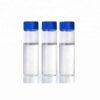
OEN CHEMICALS GMBH
Austria
Chemical Appearance Hydrogen Peroxide 35% or Dihydrogen Dioxide has a transparent and colorless appearance. It comes in the liquid form with a sharp odor. Chemical Applications Hydrogen Peroxide has many industrial applications. Its main applications are: It is used as a bleaching agent in textile and paper industries. It is used in the production of various organic compounds in the chemical industries. It is used in the oxidation and hydroxylation reactions. Hydrogen Peroxide is used as a steriliser and disinfectant in wastewater treatment. In the mining industry it is used for eliminating the toxic effects of cyanide tailings.
Request for a quote
OEN CHEMICALS GMBH
Austria
Iron Oxide is an inorganic compound. It is a very useful chemical compound which is made up of iron and oxygen. It occurs by the oxidation of iron. Its chemical formula is Fe2O3. Chemical Appearance Iron Oxide has the appearance of a red brown solid. It mostly comes in the powdered form. It is an odourless compound. It is insoluble in water. Chemical Applications and Strengths Iron Oxide is an extremely efficient chemical compound and therefore, has many commercial applications. Its main applications and strengths are: Iron Oxide is most popularly used as feedstock in the iron and steel industries for the mass production of iron, steel, and other alloys. The fine powder of iron oxide is known as rouge and it is used to polish metallic jewellery and lenses. It is also used as a cosmetic. Rouge cuts more slowly than modern polishes but it is still widely used because it gives a superior finish.
Request for a quote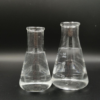
OEN CHEMICALS GMBH
Austria
Formic Acid, also known as Methanoic in IUPAC name, is a chemical occurs naturally in the environment and might even be found in ants. The word ‘Formic’ was derived from the Latin word for ant, which is ‘formic.’ The chemical can also be produced industrially by using methanol. It is equally the simplest form of carboxylic Acid you can find. The chemical is represented by the chemical formula H2CO2. This chemical is presented with 99% purity. Chemical Appearance Formic acid is a colorless liquid that emits a strong odor. The substance has a strong, pervasive odor. As a liquid, the chemical is miscible with water. It’s also miscible in other liquids like ether, acetone, methanol, and ethanol. It is slightly soluble in liquids such as benzene, xylene, and toluene.
Request for a quote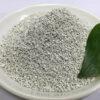
OEN CHEMICALS GMBH
Austria
Chemical appearance: Copper sulfate monohydrate is usually greyish white in color. This is its state without any water molecules in it. When it absorbs some water, it turns to blue pentahydrate crystals or granules. Both types of copper sulphate have same chemical characteristics although they differ in color and their mass. The white powder does not have any odor but is toxic when ingested. Chemical application and strengths: The chemical is highly stable in neutral media and average room temperature. However, it is highly reactive with alkaline media where it decomposes and warms the alkaline material instead. The main use if the compound is a fungicidal spray on grapes, tea, coffee, cotton and cardamom. In rubber, it is sprayed from the above to control attack on the leaves. Copper sulfate is highly soluble in water and decomposes at high temperatures over 650 degrees Celsius.
Request for a quote
OEN CHEMICALS GMBH
Austria
Cobalt sulfate monohydrate (CoSO₄ ⋅ H₂O) is a versatile compound that has gained recognition in various industries due to its unique properties It is meticulously synthesized through a precise combination of cobalt and sulfur, resulting in a fine crystalline powder The compound’s solubility in water makes it highly adaptable and essential for applications spanning agriculture, electronics, and more. In the agricultural sector, Cobalt Sulphate Monohydrate plays a crucial role in ensuring the health and vitality of livestock It is an essential trace element necessary for the synthesis of vitamin B12, a nutrient vital for metabolic processes in ruminant animals. Farmers enhance the overall well-being and growth of cattle, sheep, and other livestock, by incorporating this compound Also Essential in the manufacturing of pigments and dyes Its hygroscopic nature and essential role in growth further underscore its importance in both industrial and agricultural sectors.
Request for a quote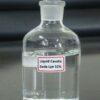
OEN CHEMICALS GMBH
Austria
Chemical appearance: Liquid Caustic Soda Lye is basic a solution of sodium hydroxide. Depending on the intended application, it can be diluted to 32% or 50 %. The solution is colourless and does not have any smells. It is a salt formed by the reaction of sodium and water. Chemical application and strengths: The caustic soda solution is a strong base that is used in various applications across various industries. Some major applications include 1. It is used in the purification of water and water treatment such the partial water softening in drinking water production 2. It is used for cleaning facilities in dairy products industries 3. It is used in the demineralisation of water as it helps in the regeneration of ion exchangers 4. In the textile industry, it used for the preparation of the spinning solutions 5. It is used as an ingredient for various pharmaceutical products such as sodium lactate
Request for a quoteResults for
Chemicals - Import exportNumber of results
90 ProductsCountries
Company type
